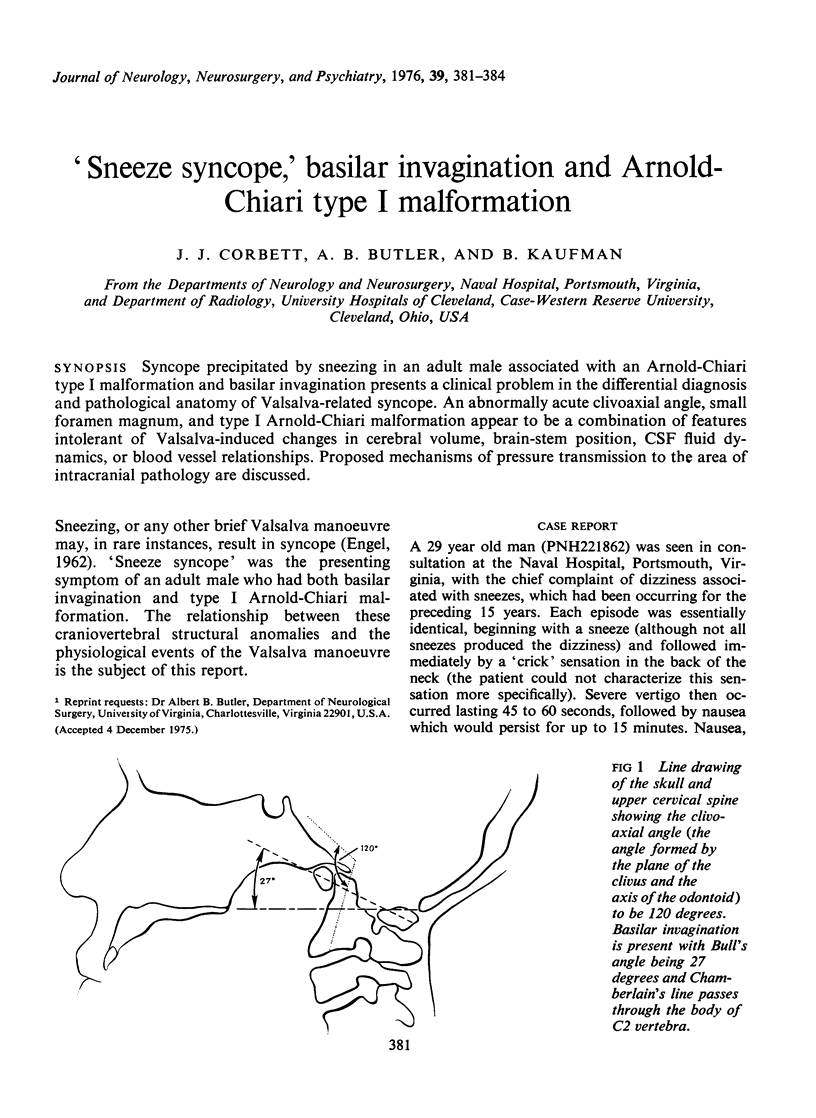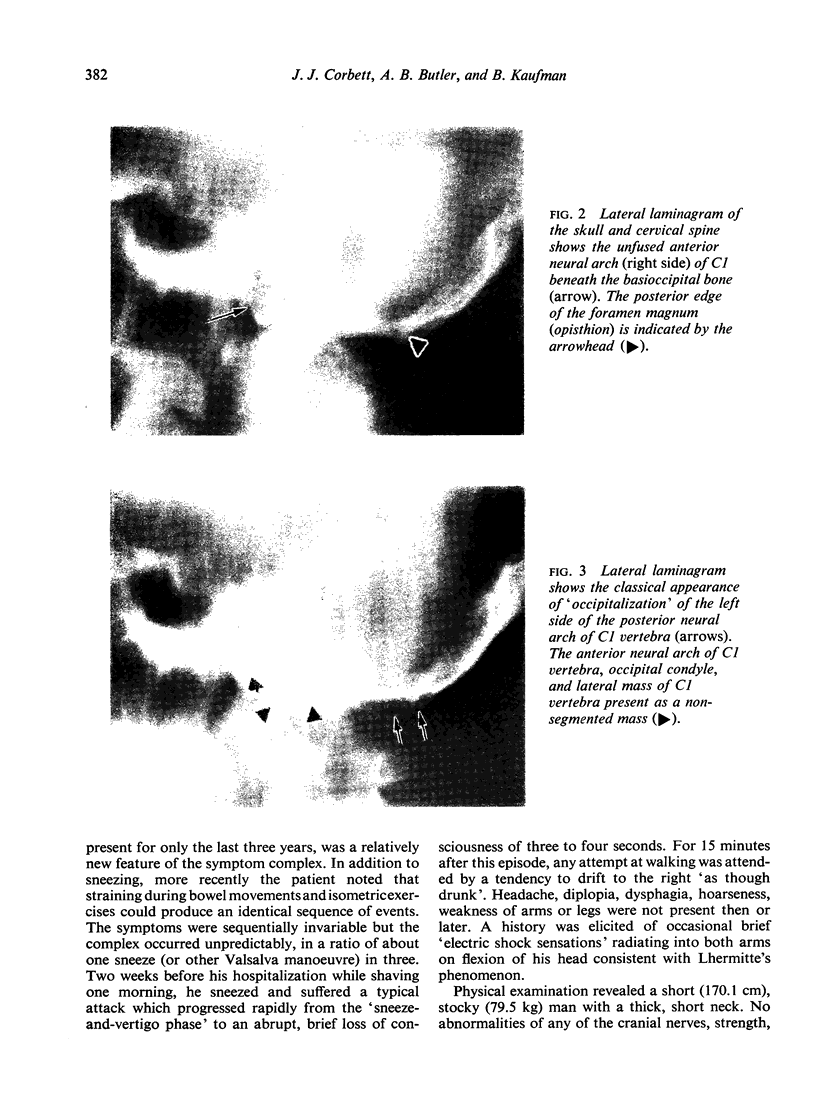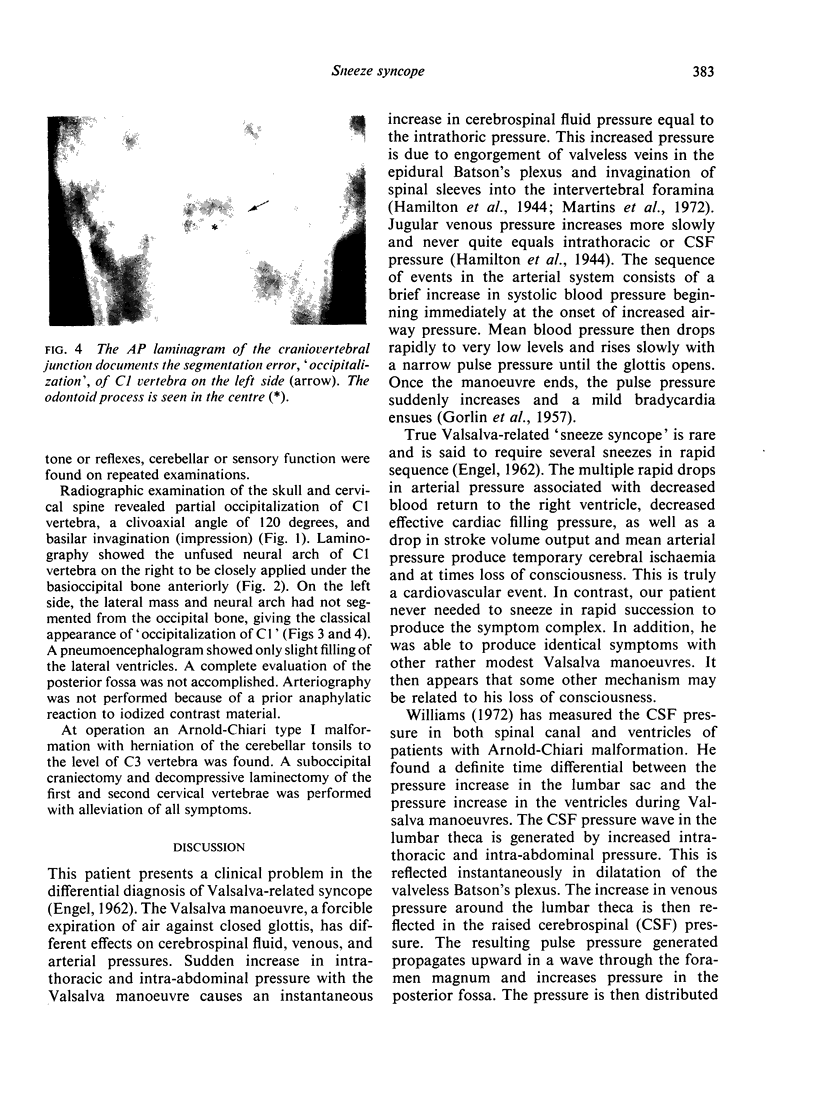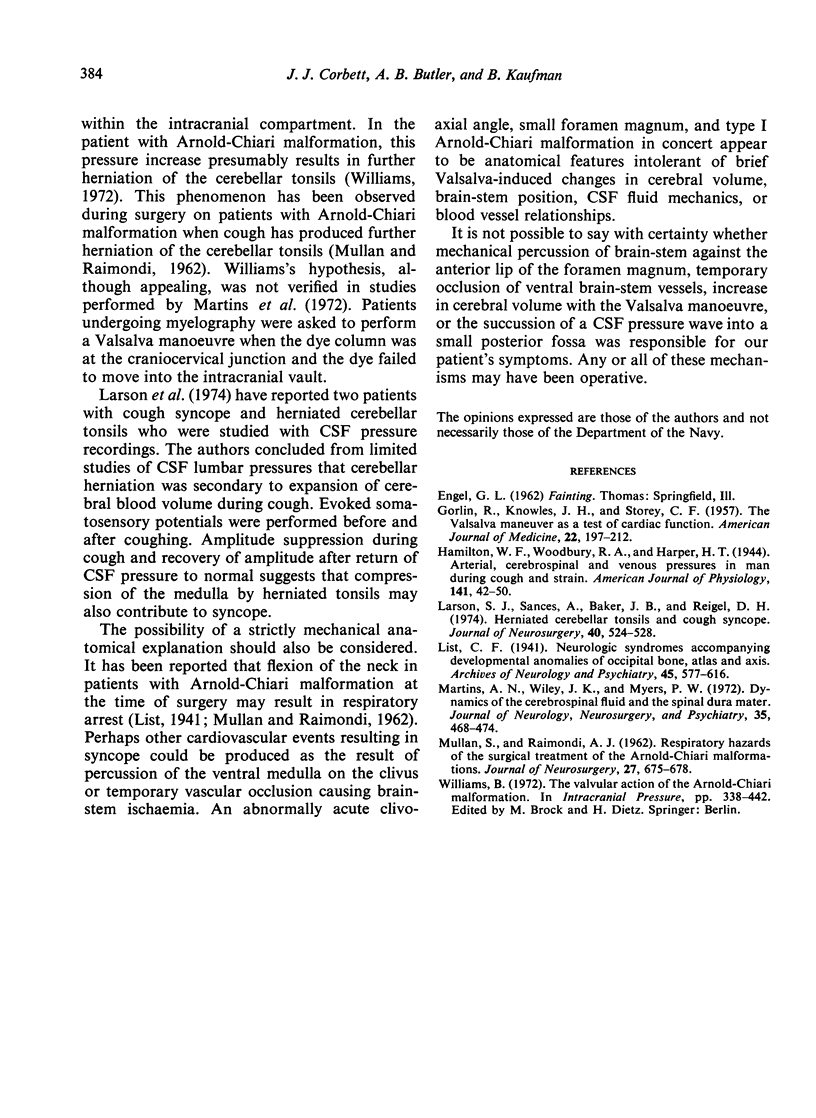Abstract
Syncope precipitated by sneezing in an adult male associated with an Arnold-Chiari type I malformation and basilar invagination presents a clinical problem in the differential diagnosis and pathological anatomy of Valsalva-related syncope. An abnormally acute clivoaxial angle, small foramen magnum, and type I Arnold-Chiari malformation appear to be a combination of features intolerant of Valsalva-induced changes in cerebral volume, brain-stem position, CSF fluid dynamics, or blood vessel relationships. Proposed mechanisms of pressure transmission to the area of intracranial pathology are discussed.
Full text
PDF



Images in this article
Selected References
These references are in PubMed. This may not be the complete list of references from this article.
- GORLIN R., KNOWLES J. H., STOREY C. F. The Valsalva maneuver as a test of cardiac function; pathologic physiology and clinical significance. Am J Med. 1957 Feb;22(2):197–212. doi: 10.1016/0002-9343(57)90004-9. [DOI] [PubMed] [Google Scholar]
- Larson S. J., Sances A., Jr, Baker J. B., Reigel D. H. Herniated cerebellar tonsils and cough syncope. J Neurosurg. 1974 Apr;40(4):524–528. doi: 10.3171/jns.1974.40.4.0524. [DOI] [PubMed] [Google Scholar]
- MULLAN S., RAIMONDI A. J. Respiratory hazards of the surgical treatment of the Arnold-Chiari malformation. J Neurosurg. 1962 Aug;19:675–678. doi: 10.3171/jns.1962.19.8.0675. [DOI] [PubMed] [Google Scholar]
- Martins A. N., Wiley J. K., Myers P. W. Dynamics of the cerebrospinal fluid and the spinal dura mater. J Neurol Neurosurg Psychiatry. 1972 Aug;35(4):468–473. doi: 10.1136/jnnp.35.4.468. [DOI] [PMC free article] [PubMed] [Google Scholar]





